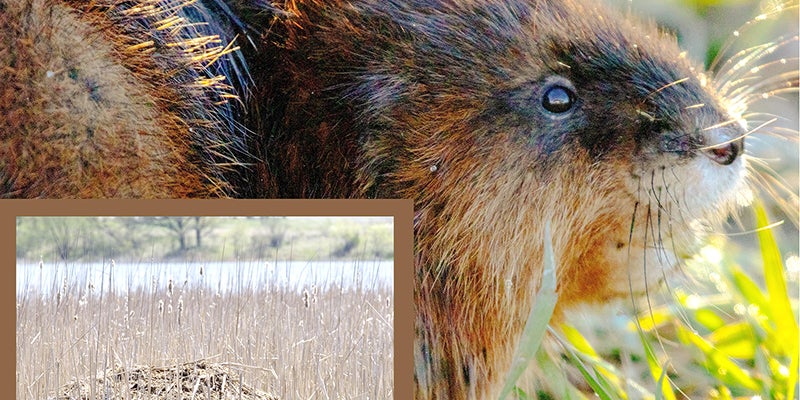Nature notes: The month of the mud cat
Published 4:54 pm Friday, September 30, 2022

- Photo provided
|
Getting your Trinity Audio player ready...
|
By Kara Page
Naturalist/teacher intern
Muskrats have had many names over the years: mud cat, marsh hare, and mud beaver are just a few. Why all the muddy names? Muskrats have been trapped for a variety of reasons over the years. Their pelts were known to be durable and waterproof, and were given the nickname the “Hudson Seal” by trappers.
Some people also liked to serve muskrat for dinner. Eating something with the word “rat” for dinner might not be so appealing, so in came another nickname “marsh hare,” which helped make the meal sound more appealing to restaurant diners. Muskrats were also approved for Catholics in Detroit to eat on Fridays during Lent in lieu of fish.
While you might not find any muskrat on the menu today, or need their fur to stay dry in the rain, these semi-aquatic mammals are important to people who are conserving wetlands, and a sign of a healthy ecosystem.
Muskrats have adapted to life in the water quite well. Able to stay underwater for more than 15 minutes at a time, they slow down their heart rate when diving. This aids them in using less oxygen, and this gives them time to forage for roots, plant stems, and clams all while underwater. It’s also handy in escaping terrestrial predators, especially if they can slip under the ice during the winter.
As the icy air of autumn moves in, you might see evidence of muskrats this October, even if you don’t see them. These nocturnal creatures leave a very obvious clue to their presence: the dome of their den!
Muskrat dens are typically built in May-early June, and then once again in October. Muskrats make their homes by gathering plant matter and mud and creating a mound near a body of water or wetland. Though similar in appearance to a beaver dam, they are much smaller and made from plants rather than logs and sticks. These dens will house them for the winter and are accessible via an underwater entrance. The den might have one room or more, and can be up to 8 feet high and 4 feet wide!
Muskrats and beavers are the only mammals who actually build their homes IN water! Unlike the beaver, our muskrat friends don’t store any food for the winter. They’ll have to spend their winter looking for food under the ice, and when they aren’t hunting for plants or clams to eat, they’ll stay huddled together with other muskrats in their dens to stay warm.
As far as wetland health goes, muskrats are a great addition to the ecology of a wetland. They are great at grazing those aquatic plants, which helps keep the plant-growth in check. They also make tunnels and pathways to and from their dens which helps maintain plant diversity, and their dens are used as nesting grounds for some water fowl like ducks and geese.
As you’re out and about in nature this October, keep your eyes open for muskrat dens by the waterways!
October at the Hormel Nature Center
Oct. 1-9: Audubon Bird Seed Sale at Runnings. Part of the proceeds from this sale helps fund scholarships for summer classes at the Hormel Nature Center.
Saturday: Sola Fide Observatory Open House, weather dependent, 8-10 p.m.
Oct. 14-15: Halloween Warm-Up, Interpretive Center Closed
Oct. 16: Archery Deer Hunt Begins: Trails remain open
Oct. 19: Live Bird Program, 4 p.m.
Oct. 22: Sola Fide Observatory Open House, weather dependent, 8-10 p.m.
Oct. 29: Planetarium Open House, Ruby Auditorium, 1-4 p.m.
Oct. 31: Christmas Crafts class sign up starts online


